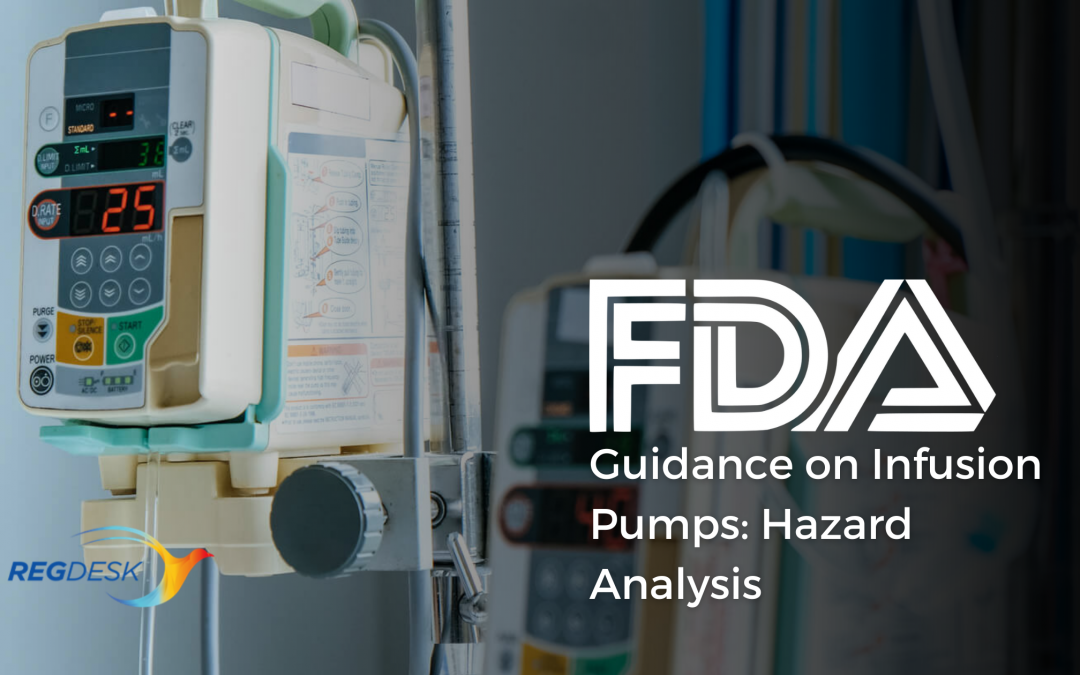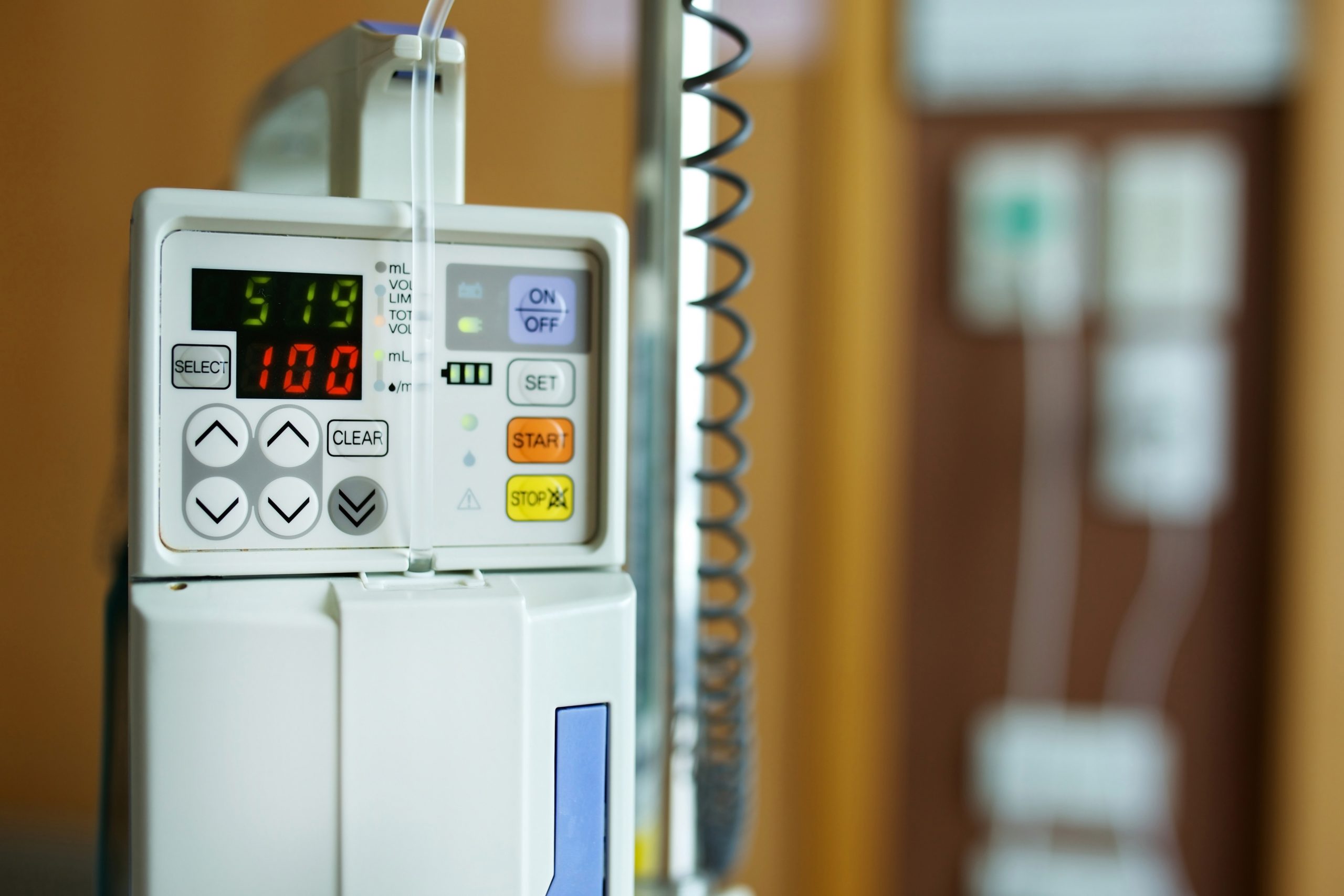The Food and Drug Administration (FDA or the Agency), the US regulating authority in the sphere of medical devices, has published a guidance document dedicated to infusion pumps and regulatory matters associated thereto. The document addresses the most important aspects related to the regulatory status of these products, including hazard analysis.
Due to the nature of the guidance, provisions contained therein are non-binding and intended to provide additional clarifications regarding the applicable legislation, as well as recommendations to be considered by medical device manufacturers and other parties involved in order to ensure compliance with any and all requirements to which infusion pumps are subject.

Table of Contents
Regulatory Background
According to the guidance, the main objective of the hazard analysis is to identify hazards and potential causes of the hazards, i.e., circumstances in which users or patients are exposed to a potential source of harm. For this purpose, the Agency provides a summary of key hazards and states that the device safety case to be submitted by the medical device manufacturer applying for the marketing approval for its product should demonstrate that the matters described therein are duly addressed.
The infusion pump system hazards the FDA pays special attention to include the following:
- Infusion Delivery Error – intended medication selected and delivery attempted, but failure to deliver within the right time, dose, volume, patient, or anatomical or physiologic site specifications. This can include over-delivery, under-delivery or delay in delivery situations.
- Incorrect Therapy – failure to select or deliver the intended medication because the wrong substance was selected for delivery.
- Biological/Chemical Contamination – unintended contact with biological or chemical substance, or unintended patient or provider physiologic response to intended biological or chemical substance.
- Traumatic Injury – burns, cuts, abrasions, air embolisms, electric shock, etc.
It is further stated that medical device manufacturers should carry out a hazard analysis in order to identify the causes of hazards associated with the device. The authority additionally emphasizes that such an evaluation should be performed in the context of intended users of a medical device subject to review and of the environment it is intended to be used in as indicated in the instructions for use, labeling, and other materials accompanying the device.
According to the guidance, the scope of hazards subject to analysis should cover those arising from:
- Systematic and random failures;
- Failures due to normal or abnormal use during operational use, including sequences of use resulting in failure;
- Predictable misuse;
- Common cause failures;
- Failures caused by system, sub-system, or component interactions;
- Operating environment;
- Energy sources (e.g. mechanical, electrical, magnetic, thermal);
- Exposure to chemical or biological substances;
- Intentional and unintentional security breaches;
- Human factors;
- Storage and transport; and
- Maintenance.
Under the general rule, a hazard analysis to be performed by the medical device manufacturer should be based on the methods described in the applicable standard ISO 14971. Additionally, the responsible entity should take into consideration the information regarding the use of similar medical devices available through Medical Device Reports (MDR), corrective and preventive actions, complaints submitted by customers, etc.
In order to assist medical device manufacturers in conducting and documenting a hazard analysis, the FDA also provides some examples of how the hazards associated with infusion pumps should be identified and evaluated. The Agency emphasizes that the particular scope of hazards would depend on the design of the infusion pump in question, its specific features and functions, as well as the intended use environment. All the abovementioned points should be considered by the medical device manufacturer when deciding on the particular measures to be implemented in order to mitigate risks associated with the device it intends to market in the US. Additionally, the FDA recommends that the hazard analysis include a process for identifying initiating events and sequences of events for each hazardous situation throughout all aspects of device use (e.g., drug loading, priming, programming, infusion).
Sources of Hazardous Situations
The guidance outlines the main sources of hazardous situations and also provides some examples thereof, namely:
- Operational sources: incorrect/incomplete priming process, chemical precipitation inside the delivery path, positioning of the pump lower than the infusion site, algorithmic errors, broken drug reservoir, etc.
- Environment sources: exceeding the limits (in any direction) of temperature, humidity or air pressure, electromagnetic interference, inadequate shielding, etc.
- Electrical sources: incorrect or loose interconnection between devices, failure of charging the battery or its overcharging, short circuit.
- Hardware sources: malfunctioning component, problems related to communication, failure of sensors the device contains.
- Software sources: backup function failure, problems related to communication, uninitialized variable, software runtime error, etc.
- Mechanical sources: broken part, damage to the power cord.
- Biological and chemical sources: inadequate device cleaning, compatibility issues, drug leakage.
- Use sources: confusing UI, unclear instructions for use, use errors.
It is important to mention that the approach described herein should not be construed as mandatory but rather as a recommended framework medical device manufacturers should take into consideration when developing their own approach with regard to hazard analysis. The Agency explicitly states that an alternative approach could be applied, provided such an approach complies with the applicable regulatory requirements and has been approved by the authority in advance. In the course of hazard analysis, the manufacturer should attempt to identify potential hazards associated with the use of the infusion pump in question in its intended use environment and conditions and also analyze foreseeable consequences of incidents potentially caused by the hazards. In this regard, the manufacturer should pay special attention to the design and functionality of the infusion pump as this could significantly impact the hazards associated thereto, as well as potential consequences of adverse events that could take place. As stated above, the Agency encourages medical device manufacturers to identify the events triggering hazardous situations and the consequences resulting thereof by analyzing any and all elements of the device and procedures associated thereto.
In summary, the present FDA guidance describes the sample framework for hazard analysis aligned to the specific features of infusion pumps. The document outlines the most important safety- and performance-related concerns associated with infusion pumps based on their design and intended use. By virtue of the guidance, the Agency provides medical device manufacturers with particular recommendations regarding the scope of hazard analysis and the core points to be covered.
Source:
How Can RegDesk Help?
RegDesk is a next-generation web-based software for medical device and IVD companies. Our cutting-edge platform uses machine learning to provide regulatory intelligence, application preparation, submission, and approvals management globally. Our clients also have access to our network of over 4000 compliance experts worldwide to obtain verification on critical questions. Applications that normally take 6 months to prepare can now be prepared within 6 days using RegDesk Dash(TM). Global expansion has never been this simple.


